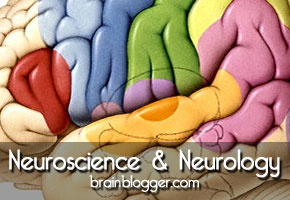Social and Physical Pain Share Neural Architecture
 Monday, August 17, 2009 at 09:29PM
Monday, August 17, 2009 at 09:29PM  The old adage, “sticks and stones may break my bones, but words will never hurt me,” may be more defensive than accurate. Indeed, most languages rely on words that represent pain — hurt feelings, heartache, broken hearts — to communicate feelings of social distress. Recent findings in neuroscience suggest that sayings such as these may reflect more than poetic metaphor, and instead indicate an overlap in neural systems used to represent physical and social pain in humans.
The old adage, “sticks and stones may break my bones, but words will never hurt me,” may be more defensive than accurate. Indeed, most languages rely on words that represent pain — hurt feelings, heartache, broken hearts — to communicate feelings of social distress. Recent findings in neuroscience suggest that sayings such as these may reflect more than poetic metaphor, and instead indicate an overlap in neural systems used to represent physical and social pain in humans.
In a seminal paper published in Science, Eisenberger, Lieberman, and Williams created feelings of social exclusion in participants using a task known as “Cyberball.” Cyberball is a virtual ball-tossing game, in which participants believe that they are playing catch with other players. However, there is an interesting caveat. Although participants believe they are playing in a live game, the game is in fact a predetermined simulation, in which after several tosses amongst all players, the virtual players systematically stop throwing the ball to the participant. The researchers found that when participants played Cyberball during a fMRI brain imaging scan, the dorsal anterior cingulate cortex (dACC), an area known to code for the negative sensations related to physical pain, activated when participants stopped being tossed the ball, as did the ventrolaterateral prefrontal cortex (VLPFC), an area known to regulate the distress associated with physical pain.
 But how sweeping is it to say that social and physical pain share the same neuroanatomy? It is important to stress that the networks are not entirely overlapping. Physical pain researchers have already identified what they call, “the pain matrix,” or, the neuroanatomy that underpins the experience of physical pain. In addition to the dACC, this matrix includes the thalamus, insula, the cerebellum, frontal cortex and primary and secondary somatosensory cortices. Nevertheless, pain researchers suggest that there are two physiological aspects of pain — the actual somatosensory experience and the perceived unpleasantness of that experience. Importantly, a great deal of research has identified the dACC to play a role in the felt unpleasantness of physical pain, whereas the somatosensory cortex and insula are associated with the sensory discrimination of pain.
But how sweeping is it to say that social and physical pain share the same neuroanatomy? It is important to stress that the networks are not entirely overlapping. Physical pain researchers have already identified what they call, “the pain matrix,” or, the neuroanatomy that underpins the experience of physical pain. In addition to the dACC, this matrix includes the thalamus, insula, the cerebellum, frontal cortex and primary and secondary somatosensory cortices. Nevertheless, pain researchers suggest that there are two physiological aspects of pain — the actual somatosensory experience and the perceived unpleasantness of that experience. Importantly, a great deal of research has identified the dACC to play a role in the felt unpleasantness of physical pain, whereas the somatosensory cortex and insula are associated with the sensory discrimination of pain.
Why might the human brain rely on one region, the dACC, to compute the felt unpleasantness associated with both physical injury and social distress? One explanation relies on the observation that humans, and other mammals, rely on social bonds for survival. The unpleasantness associated with physical injury acts like an alarm notifying the animal of ensuing threat to survival. Through the course of evolution, the same alarm system may have been hijacked to also notify the mammal of threat to their social bond, and hence survival. Indeed, young mammals’ distress vocalizations in response to separation from their caregivers rely on functioning cingulate gyrus, and destroying the ACC in macaques lends reduced affiliating social behavior.
All in all, it seems that feeling “hurt” can apply to both physical and social injury, and the feelings similarly rely on activation of the dACC. Although words may never break your bones, words and other forms of social rejection, could surely hurt you.
References
Eisenberger, N. (2003). Does Rejection Hurt? An fMRI Study of Social Exclusion Science, 302 (5643), 290-292 DOI: 10.1126/science.1089134
Hariri, A., Bookheimer, S., & Mazziotta, J. (2000). Modulating emotional responses: effects of a neocortical network on the limbic system. NeuroReport, 17(11), 43-48.
Panksepp, J. (1998). Affective neuroscience: The foundations of human and animal emotions. Oxford University Press.
MacLean, P.D. (1993). Perspectives on cingulate cortex in the limbic system. In Neurobiology of Cingulate Cortex and Limbic Thalamus: A Comprehensive Handbook (Vogt, B.A. and Gabriel, M., eds), pp. 1-15, Birkhauser.
Hadland, K. (2003). The effect of cingulate lesions on social behaviour and emotion Neuropsychologia, 41 (8), 919-931 DOI: 10.1016/S0028-3932(02)00325-1
Source: BrainBlogger


Reader Comments